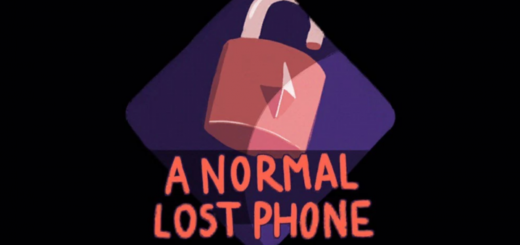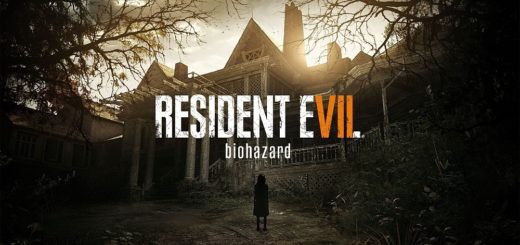Q.U.B.E. 2 Review
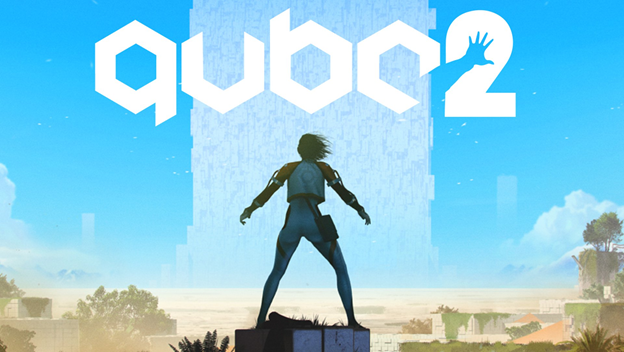
A video game doesn’t always need a story. Because the verb we use when we consume games is “play,” not “watch,” the mechanics and interactions take precedent over the narrative. When Toxic Games released the original Q.U.B.E. is 2011, it was devoid of plot, yet was still a solid puzzler in its own right. However, a well-planned marriage of style and substance is what can push a game or a series from “good” to “great,” and that’s where Q.U.B.E. 2 succeeds.
Q.U.B.E. stands for “Quick Understanding of Block Extrusion,” and you’ll certainly extrude your fair share of blocks in this title. A puzzler where you work room by room, the game has drawn many comparisons to the Portal series, including their main shared concept of influencing physics to progress, the sterile white-paneled environments, and their female leads. And while Q.U.B.E. is certainly inspired by Valve’s groundbreaking series, it never feels derivative, but instead has its own gimmicks and gameplay that make it stand out in the genre. Using special gloves that can remotely manipulate blocks in their environment, the player must create passages from one room to the next. Different cubes exhibit different properties, such as red boxes that will extend into a ledge that you can jump on, or blue ones that catapult you up in the air and across chasms.
In the original Q.U.B.E., the player character had to utilize pre-existing amounts of different types of boxes, taking them and arranging them around the room to succeed. In the sequel, you have to select and spawn the type of box you want to progress through each part of the puzzle, instead of being provided with the materials outright. This not only provides cleaner visuals, but also that feeling of ingenuity, as you can solve puzzles in multiple ways. Puzzle games can also be rage-inducing for me, so I enjoyed how I could methodically work through my options until I found a solution, and never got stuck for long enough to the point where I was driven to consult a walkthrough.
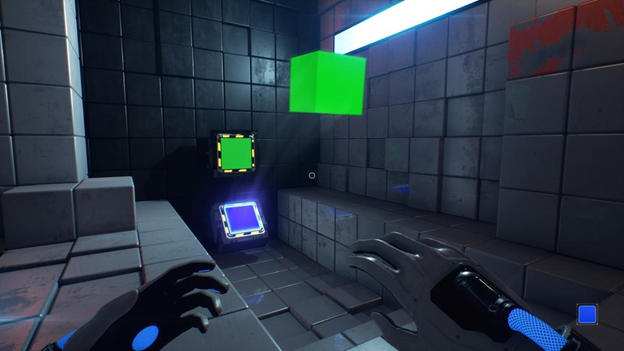
Spawning a green cube that then gets catapulted over to help you get up. It’s like a magic Rube Goldberg
The original game was later re-released with a “Director’s Cut” that added narrative context to the puzzling via an overlaid voice-over track. While that was more of a band-aid solution for drawing players in, this sequel’s story feels more organic and tied to the rest of the game. You play as archeologist Amelia Cross, who mysteriously wakes up in the middle of a maze. As she attempts to figure out what is happening, Amelia recruits the help of the enigmatic Emma Sutcliffe, who speaks to her through a comlink. With your trusty cube gloves, you work your way through increasingly difficult puzzles as you try to discern Emma’s true nature, as well as that of the labyrinth you inhabit. The comlink fizzles in and out between rooms, so the narration never becomes overbearing or annoying, instead providing motivation for you to reach the next room to be rewarded with a new interaction or bit of backstory. Another thing: although the characters’ gender has little-to-no bearing on the story, it’s extremely refreshing to have two female main characters who talk to each other. Even a small amount of representation really goes a long way for a subset of gamers who don’t always get an onscreen avatar to identify with.
Rendered in Unreal Engine 4, each of the hundreds of cubes that make up each room is satisfyingly slick and shiny, reflecting the neon lighting across the walls. Sharp graphics complement the art design and make the game one of the most beautiful that I’ve played on my Xbox One. This clean aesthetic immediately soothed any amount of annoyance I experienced with the puzzles. Even when Amelia is just taking an elevator up to the next room, it’s engrossing to look around the gorgeous environment.
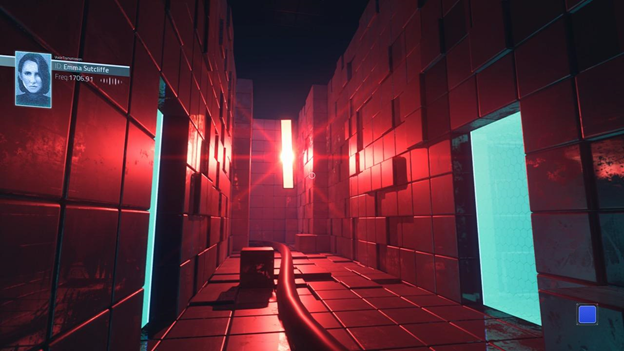
Gotta have that J.J. Abrams lens flare
Image Source: Screenshot
The biggest gripe I have with the game are control issues. When switching between box types, you use the bumpers on your controller and initiate their power with a trigger. But different cubes require the use of different triggers, so sometimes I would accidentally switch over and use a different function than I meant to, which meant having to switch back and start all over again. Said snafus in input are easier to avoid the longer you play, but it seems like an arbitrary annoyance, where switching back to the function I wanted took up more of my play time. This issue wasn’t enough to put me off the game; instead, I felt motivated to master the commands.
Q.U.B.E. 2 smooths out the rough edges from the first game while introducing clever new aspects to create a polished update of a proven formula. I got genuinely excited every time a new type of cube was thrown into the equation, and really felt like I knew Amelia, which is not typically the kind of connection I feel with video game protagonists. Q.U.B.E. 2 is definitely challenging, but it also lets you find the story and solutions at your own pace, and that is the catalyst for a great puzzle game.
Verdict: Recommend
Reviewed on Xbox One

